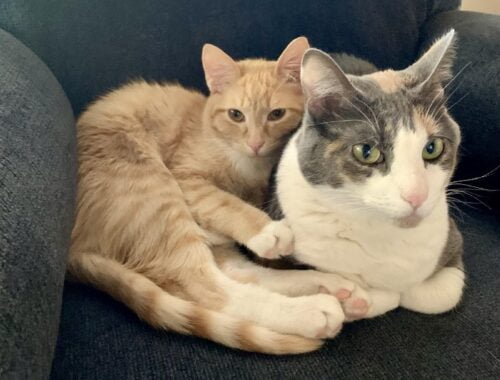
The Art of the Close Read
Being an intelligent content consumer depends on the art of the close read. It’s not just useful in your college literature class anymore.
I’ll never forget the day one of my English professors in college introduced me to the (extremely) close read. I was sitting in class as he dissected one of Shakespeare’s sonnets, expertly choosing a single word within the poem to discuss with the class. He expounded on how that single word could be interpreted in many ways. It could have different meanings in and of itself, or it could have even more different interpretations based on its placement within the line and its location within the poem as a whole. As a self-proclaimed English nerd, writer, and reader, this concept was mesmerizing. To put it simply: my mind was blown.
In the coming semesters, I set out to refine my close reading skills. I took what I had previously believed to be a close reading of a page or a paragraph in a given work, and made it my goal to go into as much detail as possible on a mere word or sentence. I wrote entire essays on a single word in Flannery O’Conner, a single synonym in a poem by June Jordan, or a short sentence in an essay from James Baldwin. I loved examining how language could be used in so many different ways, and to this day I am in awe of the power such a small collection of words, or a single word, can have.
These days I don’t spend my days in a college classroom. I no longer have due dates for essays, but for state reports; and I don’t always read with the intent of dissecting the writer’s language — sometimes I read for fun. One reason I read nowadays, though, is for information. We all read to consume, and consequently, or inconsequently, to interpret. We live in the information age — content is king — and while you may not realize it, the art of close reading is more important than ever before.
There is an innumerable amount of content being published every single day. The days where a newspaper stand was the one spot that contained most sources of reliable, newsworthy, information, have passed. There is information everywhere, and its reliability is almost constantly up for debate. This is where close reading can be one of the most valuable tools in your content consumer tool belt.
During times like these, the ability to distinguish the meaning, intent, and ultimate hit that a piece of news writing makes is so important. We are collectively having to interpret what information is valid, up to date, and useful, numerous times daily. It can be overwhelming and difficult — it’s something that feels like a big mountain to climb on top of the hills we are all stumbling up day-in and day-out. But it’s important.
So what does this look like in everyday life? In what ways does close reading come into play outside of the classroom?
Interpreting meaning
In this digital age, we all know that how a message comes across in print is different than it would sound coming out of someone’s mouth. This is true for text messages, emails, and speeches read verbatim instead of heard. Because of this, close reading is so important! Not everyone will obsess over an email before sending it to make sure the tone they are trying for comes across like me, but when it comes to well-thought-out and articulated news articles or even presidential addresses, you can be almost certain that each word matters.
We all know what synonyms are — words that have the same or similar meaning as one another — but something not everyone takes into consideration is the connotation that different words have. For example, jolly and happy have relatively the same meaning. But only one makes you think of Santa Claus.
So pay attention to the words writers use. Pick out the one or two phrases that sound the harshest, or the flimsiest, or that don’t sit right with you as you read, and evaluate why that word was chosen. See what other words could be used instead and how it changes the meaning.
Establishing credibility
These days there’s a plethora of people writing about any given topic, but not everyone has the expertise required to be a trustworthy source. Sometimes you can tell whether or not someone actually knows what they’re talking about just by the way they use their words. Are they trying to establish credibility by throwing in lengthy or fancy words just for the heck of it? Are words being misused or sentences making claims out of context? Close reading will allow for these things to come to the surface. If someone is writing in their field of expertise, they’ll be more likely to write in a way that isn’t trying to be accurate and credible, but that is anyway. No fluff, just the truth, and their honest perspective.
Understanding tone
This relates heavily to interpreting meaning but is in and of itself very important. When dissecting an article or other source via close reading, the process helps with understanding tone. You can look at a word, a sentence, or a paragraph and evaluate the words. Identify what words were used versus what words could have been used, and take note of punctuation. Is the text period-heavy or exclamation mark-heavy? Are there dashes and contractions — which typically indicate a more informal or conversational tone — or is every word spelled out or footnotes used to provide further information?
You might not think these things matter at first glance, but they contribute to the overall tone of what you’re reading. It’s important to take note of this. Being blunt and to the point works well in some instances, but being upbeat and casual works better in others. Close reading can help you interpret the tone of what an author is conveying.
Writing in response
So while yes, close reading is helpful when consuming information, it’s also invaluable in helping you understand your own writing and how to best convey your message. You can flip close reading on its head and use what you learn from dissecting the words of others to write the best messages, essays, and opinion pieces. You might, after all, just end up with a fellow close reader examining your words on the other end of the internet, so make sure you’re coming across in the most accurate and best light.
Close reading can seem like a foreign and complex process, but it’s so important in today’s world of content creation and content consumerism. We all can do a better job of investigating the words we ingest — whether on the page or on the screen. Being an intelligent content consumer depends on the art of the close read. It’s not just useful in your college literature class anymore.





